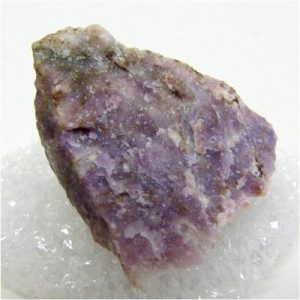Wilsonite
Wilsonite is a pinkish mauve to rose red variety of Muscovite that is named in 1853 by T. S. Hunt for Dr. James Wilson of Perth, Ontario, Canada, who discovered the material at Bathurst Township, Lanark County, Ontario, Canada. Wilsonite is an aluminosilicate of magnesium and potassium and almost identical in composition, hardness and density to Gieseckite and very similar to Alurgite, also varieties of Muscovite, although Wilsonite has distinct cleavage form and crystal habits. Wilsonite may be pseudomorphous after Nepheline or Cordierite or possibly an altered Scapolite. Wilsonite cabochon gems are uncommon and beautiful with mauve to rose red colors.
Alurgite is another variety of Muscovite that is reddish-purple and gets its color from the presence of manganese in its chemical formula. A green variety of Muscovite also exists that is called Fuchsite and is colored by the presence of chromium.
Distribution: In Canada: Bathurst Township, Lanark County, Ontario and Rémigny, Témiscamingue RCM, Abitibi-Témiscamingue, Québec, Canada.
| Chemical Formula: | K2(Mg,Al)4-5(Al,Si)8O20(OH)4 (Muscovite) |
| Potassium Magnesium Aluminum Silicate Hydroxide |


